Sabai grass (Eulaliopsis binata) is a fine natural fibre belonging to the grass family. Sabai grass is usually cultivated in Orissa, West Bengal of India and in some parts of Nepal, China. The cultivation of Sabai grass has brought light into the lives of tribal and poorer people of Mayurbhanj district of Orissa.
Mayurbhanj district is known to be land of tribals of Orissa. Among 62 known tribals communities of Orissa 45 are found in Mayurbhanj district alone. Sabai grass in this land is known to be the money plant as it ensures them the income and satisfies their needs.
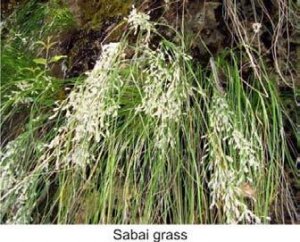
Sabai Grass in India
Major products that are made using Sabai grass are ropes, carpets, mats, sofa sets, wall hangings, and other fashionable articles. These industries are very famous for their innovative and unique ideas of products they produce. The Sabai grass woven products are very famous and appreciated in many other foreign countries as well.
Making Sabai Grass Products
A) Ropes –
a) The harvested Sabai grass is cut and made a bunch of grass. It is reaped and left in the sun to dry and made into bundles.
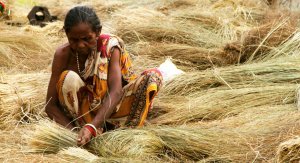
b) The grass is first twisted by hands and then tightened using a cycling ring.
c) The twisted rope is rubbed against the tree barks to remove the rough edges.
d) The ropes are arranged and made bundles.
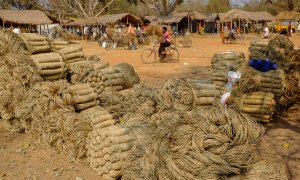
e) Ready to sell in the market.
B) Braid –
a) The sabai grass is cut and formed into bundles.
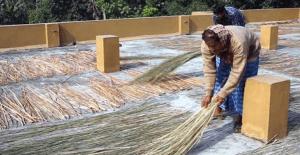
b) The grass is sorted according to the required size and quality.
c) The grass is braided the same as human hair braid.
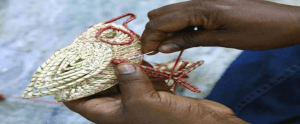
d) The rough edges are cut out.
e) Ready to use.
These Sabai products have the ability to be dyed in natural colours. The colours are usually natural and vegetable dyes. However, nowadays the Azo-free dyes are used to add colour to the woven Sabai grass products.
C) Dyeing Process –
a) The Sabai grass strands are cut according to the required size as per the design and product to make.
b) The cut strands are formed into the bunches.
c) The required colour is mixed in the required exact proportion.
d) The boiling water is added to the colour proportion.
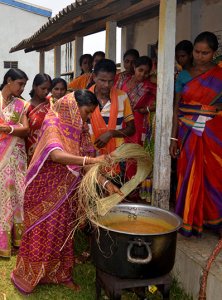
e) The grass bundles are soaked in boiling water.
f) The grass soaked in the boiling colour water is kept in the sun and allowed to dry up.
The Benefits of Sabai Grass Products
Sabai grass is really good and useful in making handmade natural weaving products. This grass was earlier used to make only ropes but now many other fashionable articles are also made.
Now the products like Sabai grass is woven bags, baskets with lids, coasters, cutlery stands, laptop bags, etc are made and are famous not only in India but other foreign countries as well.
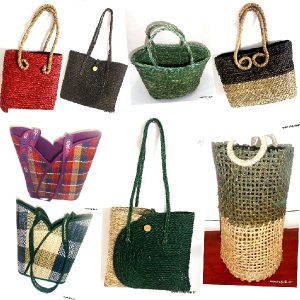
These products are eco-friendly and have higher quality than other synthetic products. They empower women to be independent and bring them respect. This art adds value to the lives of tribal and other poor people in Orissa, India bringing joy and satisfy their economic needs.


